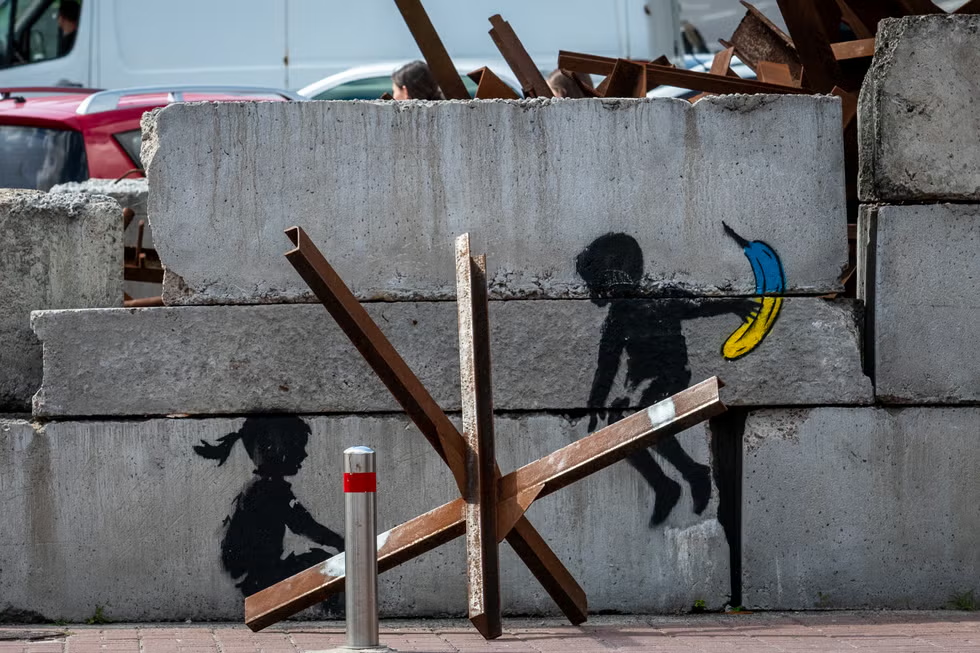
Table of Contents
Latest News: Lost BBC Interview Hints at Banksy’s Identity
A recently unearthed recording from 2003 may have shed light on the long-standing mystery surrounding the identity of the enigmatic street artist Banksy. In this interview, former BBC arts reporter Nigel Wrench inquired whether Banksy would permit the use of his real name, referencing a report by The Independent that referred to him as “Robert Banks.” When asked to confirm this name, the artist responded with, “It’s Robbie.”
The identity of Banksy has been a topic of speculation for years, with figures such as Massive Attack’s Robert Del Naja and Gorillaz co-creator Jamie Hewlett frequently mentioned as potential candidates. In 2008, The Daily Mail reported that Banksy was, in fact, Robin Gunningham, a claim that has since been denied by the artist.
Who Is Banksy?
Banksy, whose true identity remains elusive, is a street artist believed to have been born in Bristol, England, around 1974. He gained prominence in the late 1990s for his provocative stenciled artworks and is the subject of the 2010 documentary Exit Through the Gift Shop, which explores the intersection of commercial and street art. This documentary earned Banksy an Academy Award nomination for Best Documentary Feature.
Art
Banksy began his artistic journey as a graffiti artist in the early 1990s, initially part of the Bristol-based graffiti collective DryBreadZ Crew. While his early works were primarily executed freehand, he began incorporating stencils more frequently in the late 1990s, which contributed to his growing recognition in Bristol and London.
His artwork is characterized by striking visual imagery often paired with incisive slogans. Banksy’s pieces frequently engage with political themes, offering satirical critiques of war, capitalism, hypocrisy, and greed. Common motifs include rats, apes, policemen, members of the royal family, and children. In addition to two-dimensional works, Banksy is known for his installation art, with one notable piece featuring a live elephant painted in a Victorian wallpaper pattern, which sparked considerable controversy among animal rights activists. His work on the West Bank barrier between Israel and Palestine also attracted significant media attention in 2005.
Banksy is recognized for his innovative use of copyrighted material and for subverting iconic images. A prominent example of this is his reimagining of Claude Monet’s famous series of water lilies, transformed to include drifting trash and debris.
In a 2003 BBC interview, when questioned about whether graffiti should be deemed vandalism, Banksy stated, “If it’s done properly, it is illegal! But I got a good reaction, I think, off most people from my work. You know, I’ve even had policemen in the past say they kind of like things about it, but… I just think it’s my right to go out and paint it.”
Banksy’s Identity
The identity of the enigmatic street artist Banksy remains a subject of intense speculation and intrigue. While various names have emerged over the years, Robert Banks and Robin Gunningham are the most frequently suggested candidates. Gunningham, an artist born in Bristol in 1973, gained attention as a potential Banksy after images surfaced of a man purported to be the artist. His relocation to London around 2000 aligns with the timeline of Banksy’s emerging body of work, further fueling the conjecture surrounding his true identity.
Complicating the narrative, some commentators, including journalist Craig Williams, have posited that Banksy may actually represent a collective of artists operating under a single moniker. However, in November 2023, a significant development occurred when it was revealed that Banksy referred to himself as “Robbie” during a BBC interview conducted two decades earlier.
According to Smithsonian Magazine, a pending lawsuit poses the potential for disclosing Banksy’s full name. The artist is currently facing legal action from a greeting card company named Full Color Black, which is suing for defamation stemming from a now-deleted Instagram post made by Banksy in 2022. This post criticized a collaboration between Guess clothing store and Brandalised, the trading entity of FCB, which featured one of Banksy’s artworks without authorization. In his post, Banksy remarked, “Alerting all shoplifters. Please go to Guess on Regent Street. They’ve helped themselves to my artwork without asking; how can it be wrong for you to do the same to their clothes?” FCB is seeking at least $1.6 million in damages and has indicated in its filing that it reserves the right to compel the artist to reveal his identity for the purposes of these proceedings.
“The Banksy Effect”
Banksy’s ascent to global fame has transformed his works from acts of vandalism into highly coveted pieces of contemporary art. Journalist Max Foster has dubbed this phenomenon “the Banksy effect,” reflecting the soaring prices associated with street art in the wake of Banksy’s notoriety. The artist’s visibility surged following the release of the 2010 documentary Exit Through the Gift Shop, which premiered at the Sundance Film Festival and garnered an Academy Award nomination. Banksy requested permission to attend the ceremony in disguise; however, this request was ultimately denied by the Academy.
In October 2013, Banksy undertook a month-long residency in New York City, during which he committed to producing a new piece of art each day. In a statement to the Village Voice, he explained his approach: “The plan is to live here, react to things, see the sights—and paint on them. Some of it will be pretty elaborate, and some will just be a scrawl on a toilet wall.” Notably, during this period, he also sold some of his works on the street for just $60 each, significantly below their market value, further illustrating the juxtaposition of his artistic ethos with the commercial art world.
